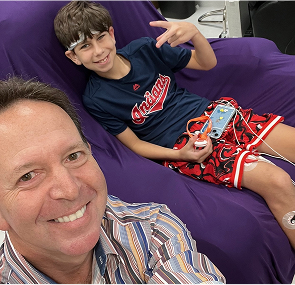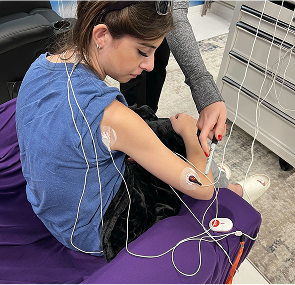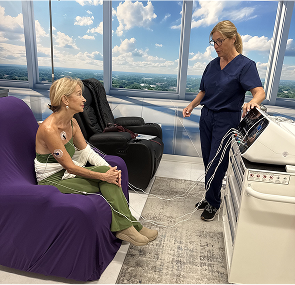Relief for Car Accident or Injury-Related Nerve Pain

Injury-related nerve pain is caused by direct trauma to nerve fibers, either through physical impact, laceration, compression, or inflammation. This type of pain is called neuropathic pain and it behaves differently than typical muscle or joint pain.
Unlike general pain, which is triggered by stimulation of nociceptors in the skin or tissues, nerve pain arises from damage within the central nervous system (CNS) or peripheral nerves. It involves disrupted pain signals, abnormal nerve endings, or deterioration of myelin sheaths, the protective coating around nerves.
Key Differences:
Common descriptors for trauma-related nerve pain include burning, shooting, stabbing, or electric shock-like sensations.
What Causes Nerve Pain After an Injury?
Nerve damage often results from high-impact injuries or surgeries that disrupt nerve pathways. Post-accident nerve pain typically follows events such as:
- Car accidents → Common cause of whiplash or nerve impingement
- Falls or fractures → Risk of vertebrae impact or microtears
- Sports injuries → Stretching or compression of spinal nerves
- Surgical trauma → Laceration or pressure on axons
- Workplace injuries → Repetitive strain or nerve compression
High-Risk Scenarios for Nerve Injury:
Trauma nerve pain often appears hours or even weeks after the incident due to delayed tissue swelling or inflammation.
What Are the Symptoms of Nerve Damage After an Injury?
The main signs of nerve pain post-injury include tingling, burning, and numbness in the affected area. Unlike muscle soreness, this pain often worsens at rest or during light touch—an indication of allodynia.
Common Symptoms:
- Burning pain after accident
- Tingling after injury
- Paresthesia: pins-and-needles sensation
- Hyperalgesia: amplified pain response
- Dermatome flare-ups: localized along nerve pathways
- Hypersensitivity to temperature or pressure
If pain persists for weeks or grows worse, neuropathy may be developing. Early detection and treatment are essential to prevent chronic sensitization.
How Is Injury-Related Nerve Pain Diagnosed?
Nerve pain diagnosis combines physical exams, imaging, and electrodiagnostic testing to pinpoint damaged nerve areas and assess function.
Common Diagnostic Tools:
- MRI or CT scans → Detects herniated discs, nerve compression, or tissue injury
- EMG (Electromyography) → Measures nerve conduction velocity
- Nerve conduction studies → Identifies signal blockages or slow transmission
- Pain mapping → Helps localize affected dermatomes
- Neurologist evaluation → Assesses sensory and motor dysfunction
Early and precise post-injury nerve diagnostics improve the odds of effective treatment and long-term relief.
What Are the Best Treatment Options for Injury-Related Nerve Pain?
Nerve pain treatment combines medical therapies with holistic support to interrupt abnormal pain signaling and promote nerve recovery.
Standard Medical Treatments:
- Gabapentin or Pregabalin → Reduces nerve excitability
- Steroids or NSAIDs → Decreases inflammation
- Nerve blocks → Temporary relief through local anesthetics
- TENS (Transcutaneous Electrical Nerve Stimulation) → Alters pain signal transmission
- Decompression surgery → Relieves pressure on compressed nerves
Additional Options for Pain Relief:
Each approach supports analgesic response, synaptic rebalancing, and functional recovery depending on the severity and type of nerve injury.
Can Lifestyle Changes Reduce Nerve Pain?
Yes, lifestyle adjustments can support nerve healing and reduce flare-ups. Healthy routines promote better synaptic balance, reduce inflammation, and lower stress-induced pain signals.
Helpful Lifestyle Changes:
- Posture correction → Reduces nerve compression
- Low-impact exercise → Supports circulation and healing
- Anti-inflammatory diet → Includes omega-3s, leafy greens, berries
- Sleep optimization → Balances circadian rhythm and pain perception
- Mindfulness or CBT → Regulates stress and improves pain modulation
Adopting these habits helps manage injury pain naturally and boosts outcomes alongside clinical treatments.
When Should You See a Doctor for Nerve Pain?
Seek medical attention if nerve pain is getting worse, affects movement, or persists beyond 2–4 weeks. These are signs of ongoing or worsening nerve damage.
Red Flags That Require Immediate Help:
- Progressive weakness or paralysis
- Loss of sensation in limbs
- Pain interrupting sleep or daily function
- Bladder or bowel dysfunction
- Sudden shooting pains down the limbs
Neurologists, pain clinics, or emergency care are equipped to assess and intervene early. Delayed treatment increases risk of functional loss or long-term complications.
What Happens If Injury-Related Nerve Pain Is Left Untreated?
Untreated chronic nerve pain can severely affect quality of life and cause permanent nerve dysfunction. Over time, pain can become centralized, meaning the brainstem and CNS start amplifying pain signals regardless of healing status.
Long-Term Consequences:
- Depression, anxiety → Due to constant discomfort
- Chronic fatigue → Disrupted sleep and stress hormones like cortisol
- Mobility loss → Muscle wasting or joint stiffness
- Disability → Inability to work or carry out daily activities
- Neuroplastic pain loops → Reinforced pain even after physical healing
Ignoring symptoms risks life disruption and significantly increases the mental and physical burden.
What Are the Best Alternative Therapies for Nerve Pain?
Alternative nerve pain treatments are increasingly effective, especially when used in combination with clinical care. They target regenerative, neural, and psychological pathways for recovery.
Emerging and Holistic Treatments:
- CBD oil → Engages cannabinoid receptors to modulate pain
- Acupuncture → Stimulates meridian points to balance pain pathways
- Stem cell therapy → Repairs damaged nerve fibers
- PRP (Platelet-Rich Plasma) → Accelerates healing through growth factors
- Biofeedback & Neurofeedback → Trains the brain to regulate pain perception
These regenerative treatments are ideal for patients seeking non-invasive, whole-body recovery methods.
Personal Stories: Healing From Nerve Injury
Patient experiences provide insight into real-world recovery. Stories often reflect the emotional highs and lows of healing from nerve injury.
Common Recovery Themes:
- Rehab programs that combine PT and pain management
- Support groups for shared coping strategies
- Resilience-building through therapy and persistence
- Gradual return to normalcy documented through case studies
- Testimonial videos sharing success after months of progress
Such stories reinforce that although setbacks happen, lasting relief is possible with the right support and approach.
How Does Mental Health Impact Injury-Related Nerve Pain?
Stress, trauma, and depression heighten nerve pain through cortisol spikes, altered serotonin levels, and trauma memory activation. Managing mental health is essential for pain relief.
Psychological Factors That Influence Pain:
- PTSD from the accident itself
- Anxiety amplifies nerve sensitivity
- Depression slows healing and lowers pain tolerance
- Therapy for nerve pain → CBT helps restructure thought-pain patterns
- Pain perception is significantly shaped by emotional state
Mental health care is not secondary—it’s part of comprehensive nerve pain management.
Who Is Most Affected by Injury-Related Nerve Pain?
Certain groups are more prone to nerve pain post-injury, due to age, activity, or occupation.
High-Risk Populations:
- Elderly → Slower myelin regeneration rate
- Children → May recover faster but are underdiagnosed
- Athletes → Prone to overuse and traumatic injury
- Workers → Repetitive strain, heavy lifting, occupational accidents
- Women → Report higher rates of chronic pain conditions
Age-based prognosis, injury demographics, and risk exposure guide personalized care plans.
FAQs
What causes injury-related nerve pain after a car accident?
Trauma compresses or tears nerves, often in the neck or spine, causing abnormal pain signals.
Is injury-related nerve pain permanent?
It can be permanent if untreated, but early intervention greatly improves outcomes.
What are the best treatments for injury-related nerve pain?
Gabapentin, PT, nerve blocks, and regenerative therapies like stem cells or PRP are effective.
Can physical therapy help nerve pain after injury?
Yes, PT improves function, reduces inflammation, and relieves pressure on affected nerves.
How long does injury-related nerve pain last?
It varies by case, but if nerve healing occurs, symptoms can resolve in weeks to months.
What does nerve pain from an injury feel like?
Sharp, burning, tingling, or electric-like pain—often worse at night or after light touch.
Can nerve damage heal on its own after trauma?
Some nerves regenerate slowly, but others may need surgical or medical intervention.
What is the difference between nerve pain and muscle pain?
Muscle pain feels dull and sore, while nerve pain is sharp, tingling, and often chronic.
Experiencing Chronic Pain in South Florida?
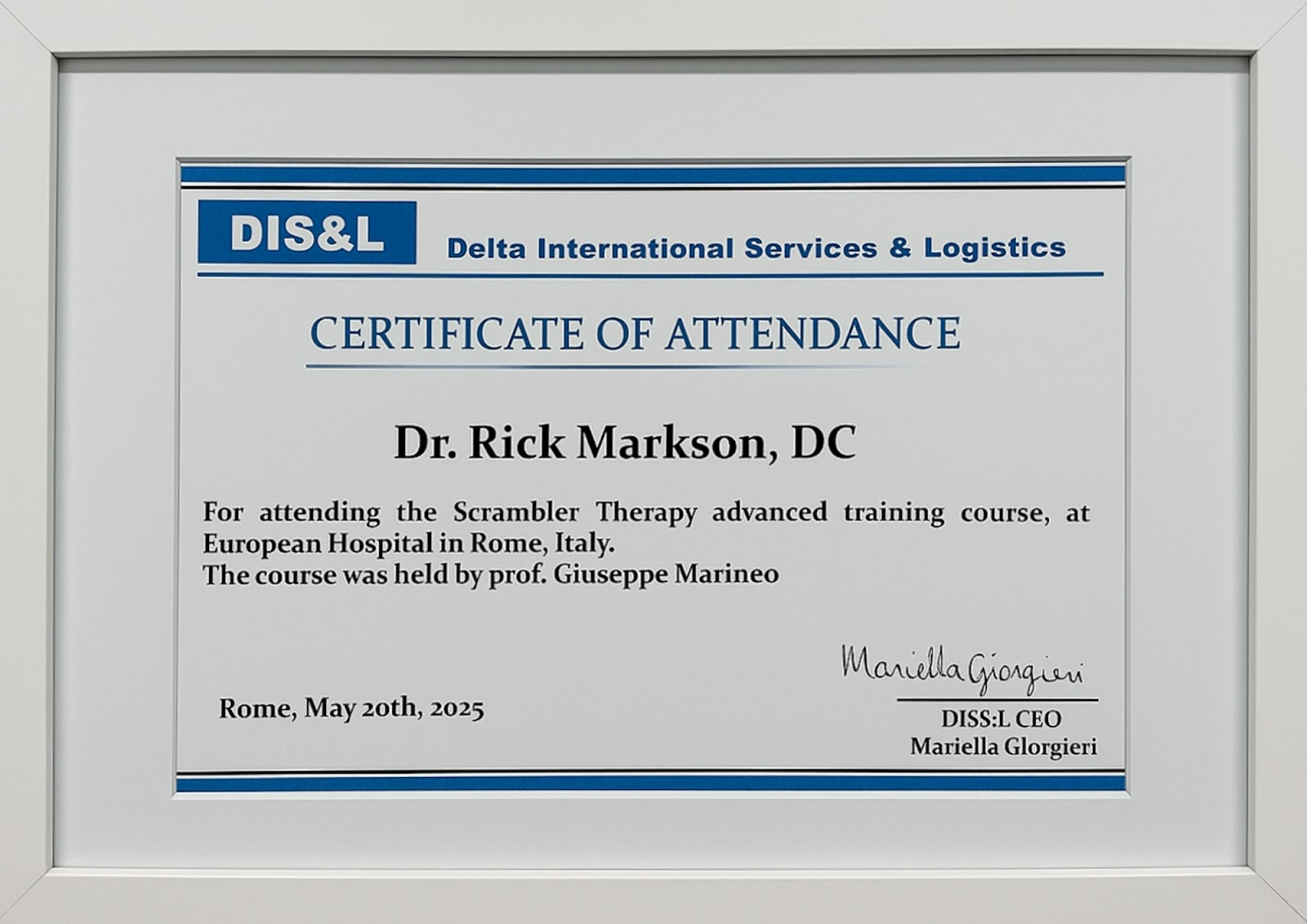
Discover South Florida Scrambler Therapy is one of the nation’s leading clinics for noninvasive chronic pain relief, offering FDA-cleared Scrambler Therapy® for adults and children. Co-founded by Dr. Rick Markson, one of the few practitioners worldwide to receive advanced certification directly from the therapy’s inventor in Rome, our clinic delivers globally recognized expertise with compassionate, personalized care. If you or a loved one is living with treatment-resistant nerve pain, we invite you to schedule a consultation and explore a life beyond pain.
Recommended Reads:
📘 What is scrambler therapy?
📘 What to Expect During a Scrambler Session
📘 CRPS Pain Relief Without Drugs—Real Patient Stories
📘 Conditions that scrambler therapy can treat
Take the Next Step: Free Consultation at South Florida Scrambler
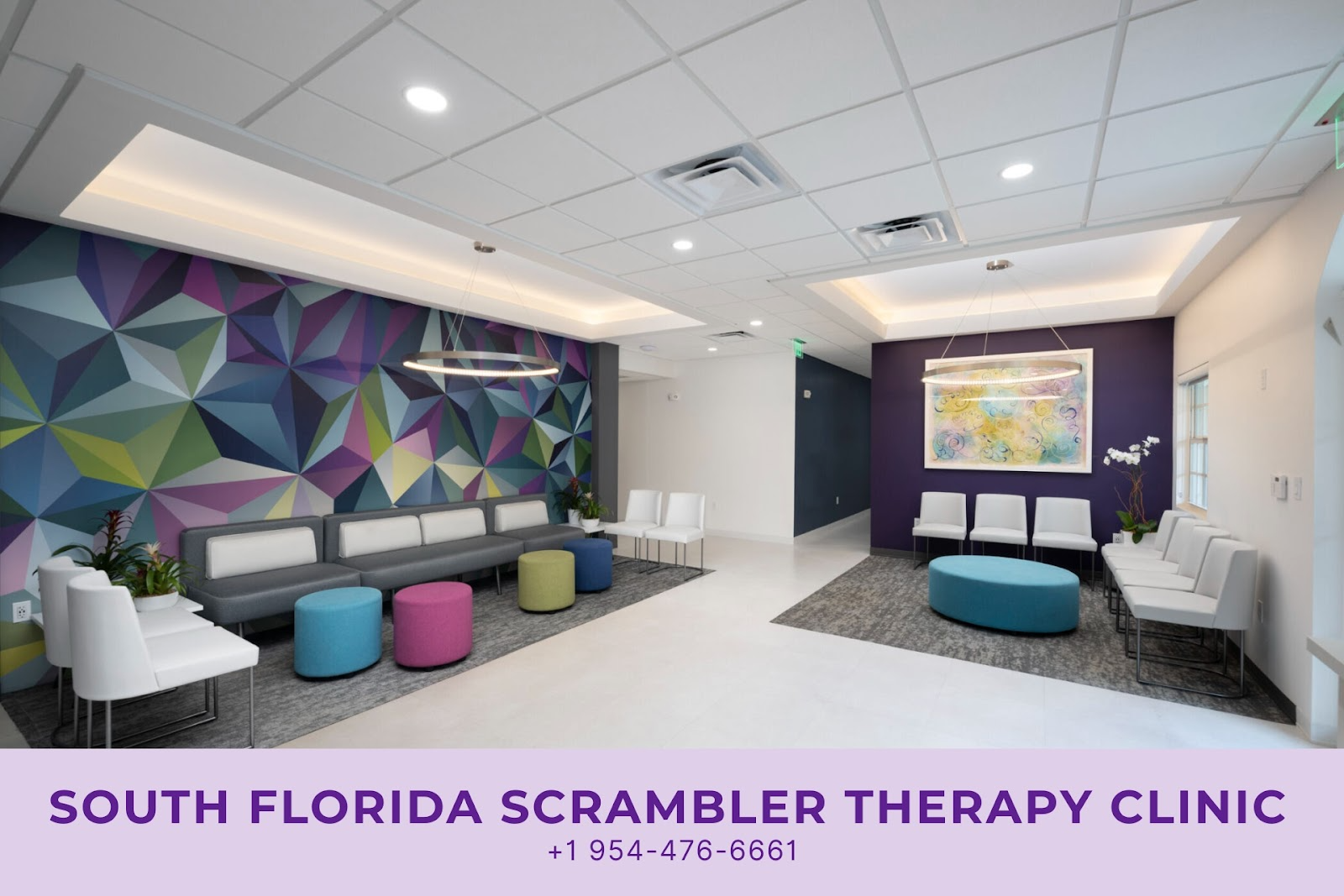
Every day counts when we suffer from chronic pain. South Florida Scrambler Therapy offers a free initial consultation to determine if Scrambler is right for you. Schedule Today:
- Speak directly with Dr. Rick Markson’s team
- Learn about treatment protocols and insurance
- Complete a customized treatment plan
- Start seeing results within days, not months
📞 Call Now or Visit website: www.southfloridascramblertherapy.com
📍 We serve Palm Beach, Fort Lauderdale, and Miami from our location at 100 NW 100th Ave, Plantation
You Can Follow Us through Our Social Media:
📸Instagram—Day-in-the-life stories from our patients
👍Facebook—Success journeys and community support
You deserve to laugh, and enjoy life without pain. The journey starts here.
Start Your Pain-Free Journey Today
